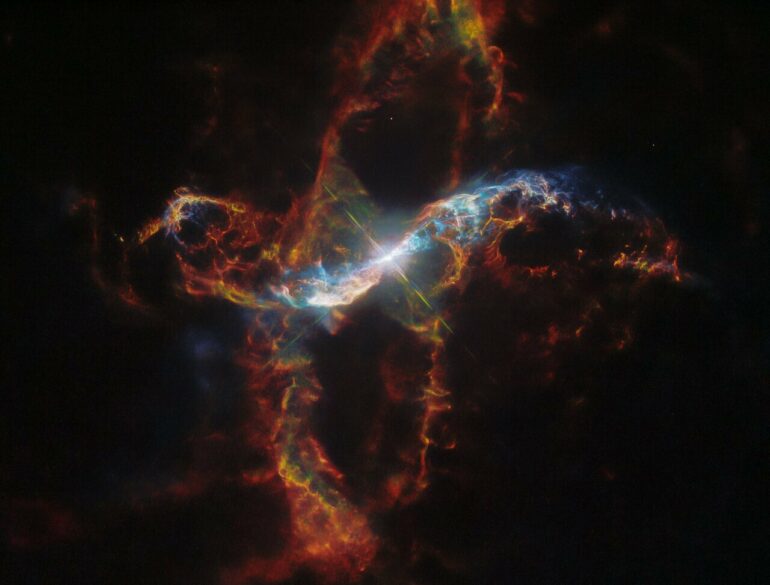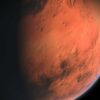The NASA/ESA Hubble Space Telescope has provided a dramatic and colorful close-up look at one of the most rambunctious stars in our galaxy, weaving a huge spiral pattern among the stars. Hubble’s images capture its details and its evolution is featured by a unique timelapse video.
Residing only roughly 700 light-years from Earth in the constellation Aquarius, R Aquarii is a symbiotic binary star: a type of binary star system consisting of a white dwarf and a red giant that is surrounded by a large, dynamic nebula. As the closest symbiotic star to Earth, R Aquarii was studied by none other than Edwin Hubble in an effort to understand the mechanism that powers the system.
R Aquarii undergoes violent eruptions that blast out huge filaments of glowing gas. This dramatically demonstrates how the universe redistributes the products of nuclear energy that form deep inside stars and jet back into space.
R Aquarii belongs to a class of double stars called symbiotic stars. The primary star is an aging red giant and its companion is a compact burned-out star known as a white dwarf. The red giant primary star is classified as a Mira variable that is over 400 times larger than our sun. The bloated monster star pulsates, changes temperature, and varies in brightness by a factor of 750 times over a roughly 390-day period.
At its peak, the star is blinding at nearly 5,000 times our sun’s brightness. When the white dwarf swings closest to the red giant along its 44-year orbital period, it gravitationally siphons off hydrogen gas. This material accumulates in the accretion disk surrounding the white dwarf, until it undergoes a powerful outburst and jet ejection, especially during the closest approach of the white dwarf to the red giant donor star.
These events have more than just a passing interest to astronomers and laymen alike in that this is one known way—as well as the truly titanic but extremely rare supernova events—to release chemical elements heavier than hydrogen and helium into the interstellar medium. Heavier elements like carbon, nitrogen, and oxygen are critical building blocks of planets like the Earth and lifeforms such as our own. They are formed in the deep interiors of stars, where the temperature is high enough to fuse hydrogen and helium.
This outburst ejects powerful jets seen as filaments shooting out from the binary system, forming loops and trails as the plasma emerges in streamers. The plasma is twisted by the force of the explosion and channeled upwards and outwards by strong magnetic fields. The outflow appears to bend back on itself into a spiral pattern. The filaments are glowing in visible light because they are energized by blistering radiation from the stellar duo that is R Aquarii. The nebula around the binary star is known as Cederblad 211, and may be the remnant of a past nova.
The scale of the event is extraordinary even in astronomical terms, since emitting material can be traced out to at least 400 billion kilometers—or 2,500 times the distance between the sun and the Earth—from the central core.
The ESA/Hubble team has developed a unique timelapse of the object consisting of multiple observing programs that span from 2014 to 2023. Across the five images, the rapid and dramatic evolution of the binary star and its surrounding nebula can be seen.
The binary star dims and brightens, seen by the size of the red diffraction spikes around it, due to the strong pulsations of the red giant star. The nebula is shown in mostly green colors, but bluer parts of it come in and out of view: this is because they are being illuminated as the lighthouse-like beam of light from the spinning binary star sweeps over them.
Provided by
European Space Agency
Citation:
Hubble captures intricacies of R Aquarii, a symbiotic binary star roughly 700 light-years from Earth (2024, October 16)



